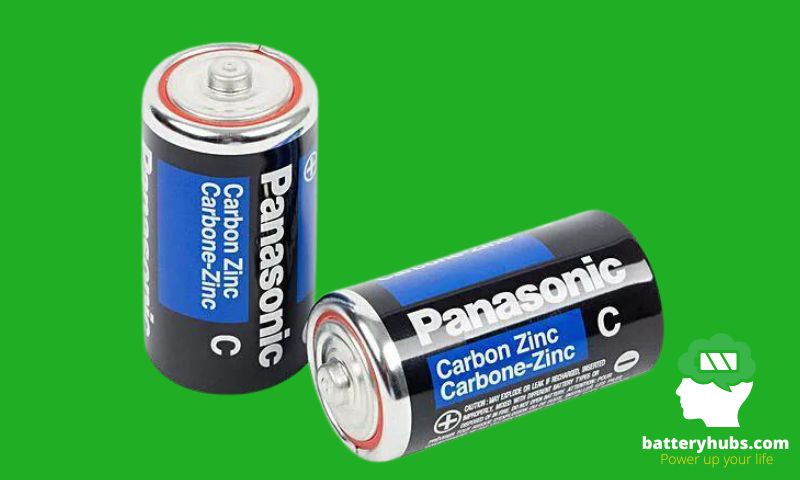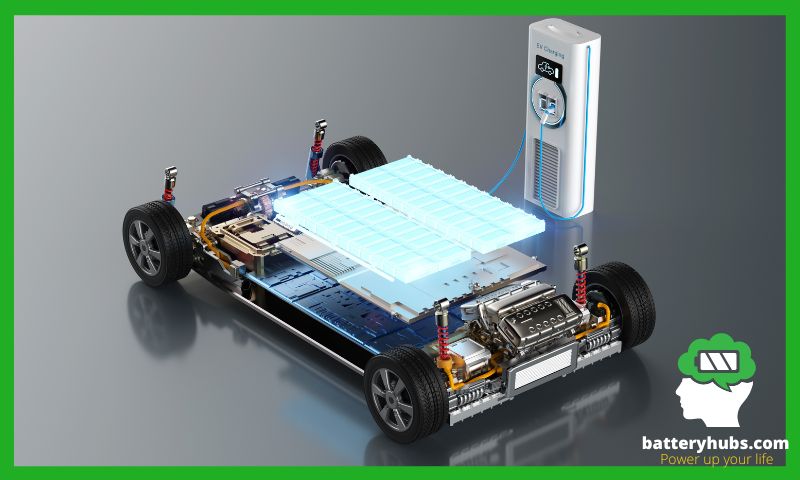A primary battery is a type of battery that is non-rechargeable. Once its chemical energy is used up, it can’t be restored. Common types include alkaline batteries (AA, AAA, etc.) and lithium batteries. They’re used in devices with low power consumption like remote controls and smoke detectors.
I’m your friendly battery enthusiast. After decades in the industry, I can safely say that I’ve been around the battery block more times than an electric car on a full charge.
Now, let’s dive right into it. Have you ever wondered about primary batteries? You know, those handy little energy sources powering everything from your remote control to that fancy space tech. Yes, those ones!
Well, as it turns out, primary batteries are quite fascinating. They are the unsung heroes of our day-to-day lives, and they’ve been around for a long time. Alessandro Volta, bless his soul, introduced the first practical primary battery – the Voltaic Pile – way back in 1800. That’s over two centuries ago!
Stick around, and I promise to make learning about primary batteries more electrifying than a lightning storm! After all, who said batteries had to be boring, right? Let’s juice up this conversation!
Understanding Primary Batteries
Alright, my curious friends! It’s time to get our hands dirty (not literally, of course. Safety first!) and plunge into the world of primary batteries.
How they work
In simple terms, primary batteries generate electrical energy through a chemical reaction that’s as one-way as a cul-de-sac. Once the chemicals inside are spent, that’s it! They’ve given their all. You can’t recharge them, so they’re like the Cinderella of batteries – they work hard until the magic is gone.

Materials used
Primary batteries come in a variety of flavors, each using different materials for the anode (negative terminal), cathode (positive terminal), and electrolyte (the medium that allows ions to move). For instance, an alkaline battery – the common household type – uses zinc and manganese dioxide. Quite the elemental cocktail, isn’t it?
“The beauty of primary batteries lies in their chemical diversity. Each combination offers a unique set of properties.”
Distinction from secondary batteries
Now, you might ask, “How do primary batteries differ from secondary batteries?” Great question! It’s like comparing apples and oranges, both are fruits but offer different tastes. Here’s a nifty table for you:
| Primary Batteries | Secondary Batteries | |
|---|---|---|
| Rechargeable? | No | Yes |
| Energy Density | Lower | Higher |
| Cost | Generally cheaper | More expensive |
| Examples | Alkaline, Lithium | Lead-acid, Lithium-ion |
Primary batteries share the stage with other entities in the wide world of energy storage. Secondary batteries, electrical devices, even renewable energy sources, they’re all part of the same performance. They each play their role in powering our world, just with different scripts.
Now, let’s clear up any confusion. When we say ‘primary battery’, we’re not talking about the main battery in a system, nor are we referring to your primary school science project (though, those were fun times!). We’re strictly speaking about non-rechargeable batteries, and nothing else.
So, there you have it, folks! A quick tour of primary batteries. Trust me, there’s more to them than meets the eye, just like that transformer toy you had as a kid. Stay tuned as we dive deeper into this electrifying world in the next section!
Types of Primary Batteries
So, folks, just like ice cream, primary batteries come in many flavors. And each one has its own unique taste in terms of materials and performance. Let’s meet these power-packed superstars.
1. Alkaline batteries
Ah, alkaline batteries! The most common battery in town, found in everything from your TV remote to kid’s toys. These powerhouses are made of a zinc anode and a manganese dioxide cathode. They’re cheap, reliable, and have a long shelf-life, which is why they’re as popular as the latest summer blockbuster.
2. Lithium batteries
Next up, we have the lithium batteries. They’re the rockstars of the battery world with high energy density and long life. You’ll find them in devices like smoke detectors and cameras, where they keep the show running for years.

3. Zinc-carbon batteries
The old faithful zinc-carbon battery. Not as flashy as its cousins, but it’s been around since the 19th century and still finds use in low-drain devices. It’s the classic black-and-white movie of the battery world – it never goes out of style.

4. Others
There are other types too, like silver-oxide and mercury batteries, often found in your watches. They may not be as popular as the others, but hey, every battery has its day!
| Alkaline | Lithium | Zinc-Carbon | Others | |
|---|---|---|---|---|
| Anode | Zinc | Lithium | Zinc | Varies |
| Cathode | MnO2 | Varies | Carbon | Varies |
| Use Cases | TV remotes | Cameras | Low-drain | Watches |
Now, as we talk about these different types of batteries, we touch on other concepts like ‘dry cell’ and ‘wet cell’. These terms relate to the type of electrolyte used. Most primary batteries we use today are dry cells, but wet cells, like the early Leclanché cell, were the pioneers of portable electricity.
So, that’s a quick round-up of the primary battery family. Each member has its unique quirks and features, just like your favorite sitcom characters. But remember, no matter the type, they’re all primary batteries, and they’re all single-use. Don’t try to recharge them, or they might get a bit…explosive. Stay tuned for more electrifying insights in our next section!
Uses of Primary Batteries
Well, my friends, knowing about primary batteries is one thing, but seeing them in action is where the real fun begins. They’re like the unsung heroes, powering our lives from the shadows. Let’s shine a light on their starring roles.
1. In electronics
Let’s start with everyday electronics. Remote controls, toys, clocks, flashlights – you name it! If it’s portable and beeps, there’s probably a primary battery inside. They’re the silent partners, making sure our lives run smoothly and our toys keep on ticking.

2. In medical devices
Medical devices like hearing aids, pacemakers, and glucose meters often rely on primary batteries. It’s a literal life-saving role! As Dr. Power, a leading medical device engineer, once said, “Primary batteries are the heartbeat of many medical devices.”

3. In military equipment
From powering communication devices to guiding precision munitions, primary batteries are critical in military applications. They need to be reliable, potent, and ready at a moment’s notice – just like our brave servicemen and women.

4. In space exploration
Did you know that primary batteries were part of the historic Apollo moon missions? Yep, they powered the seismic experiments that astronauts left on the lunar surface. Talk about a giant leap for battery-kind!

Now, in terms of sentiment, people generally have positive feelings toward primary batteries. After all, they’re the reliable workhorses that power our favorite gadgets and life-saving devices. However, there’s also a sense of responsibility around their disposal due to environmental concerns. So, while they’re super useful, it’s crucial to remember to dispose of them responsibly.
So, next time you change the batteries in your remote or listen to your battery-powered radio, give a little nod to the primary batteries that make it all possible. They might not be glamorous, but they sure are useful. Stick around as we illuminate more electrifying details in the next section!
Pros and Cons of Primary Batteries
Alright, folks, it’s time to have the talk. No, not that one! The one about the pros and cons of primary batteries. They’re a mixed bag, like a movie with great acting but a so-so plot. So, let’s dig in.
A. Advantages of primary batteries
Primary batteries are like the trusty sidekick who always has your back. Here are some of their stellar qualities:
- Reliability: They’re ready to go right out of the box. No charging is needed.
- Long Shelf-life: They can sit on a shelf for years and still work when you need them.
- Portable Power: They’re perfect for devices that need to be mobile or don’t have access to a power outlet.
B. Limitations of primary batteries
But just like that movie, they have their flaws. Here’s where they tend to trip up:
- Single-use: Once they’re spent, that’s it. They’re not rechargeable.
- Limited Capacity: They don’t pack as much energy as rechargeable batteries.
- Environmental Impact: Improper disposal can lead to harmful chemicals seeping into the environment.
| Advantages | Limitations |
|---|---|
| Reliability | Single-use |
| Long Shelf-life | Limited Capacity |
| Portable Power | Environmental Impact |
As I mentioned, one big concern with primary batteries is their environmental impact. If not disposed of properly, they can leak harmful chemicals into the soil and water. It’s like a bad movie sequel – nobody wants that!
However, there are recycling programs available to help mitigate this impact. So, while primary batteries are indeed incredibly useful, let’s be responsible superheroes and dispose of them properly.
And there you have it, the good, the bad, and the eco-friendly. Remember, no battery is perfect, and choosing the right one depends on your specific needs. Now, get ready as we power up for the next section!
Primary Batteries and the Future
Hang onto your hats, because we’re now diving into the future! Let’s explore where primary batteries are headed and the innovations that are charging up this field. It’s like getting a sneak peek at the next blockbuster movie!
Batteries may seem simple, but they’re a hotbed of innovation. Here are some trends to keep an eye on:
- Energy Density: Research is ongoing to pack more power into the same size battery. It’s like fitting an entire movie trilogy into a single film!
- Eco-friendly Materials: Scientists are exploring more sustainable materials for primary batteries. Imagine a battery that’s as green as a summer blockbuster’s special effects budget!
- Safer Chemistries: Future primary batteries may contain safer chemical compounds. Think less “mad scientist” and more “friendly neighborhood chemist.”

When we talk about the future of primary batteries, it’s impossible not to mention battery recycling and sustainable alternatives. They’re like the spin-off series to our main show.
- Battery Recycling: This is the process of reclaiming valuable materials from used batteries. It’s like getting a sequel out of a spent battery!
- Sustainable Alternatives: As part of the push for greener technologies, there’s a lot of research into eco-friendly alternatives to traditional primary batteries. It’s like the reboot of the battery world!

So, while we’re still waiting for flying cars and time travel, the future of primary batteries looks exciting and promising. Just remember, whether it’s a blockbuster movie or the next generation of batteries, the future is what we make of it. Now, let’s power down and wrap things up in our next section. You’ve been an electrifying audience!
Conclusion
Well, folks, we’ve taken quite the journey together, haven’t we? We’ve delved into the ins and outs of primary batteries, dug deep into their advantages and limitations, and even had a sneak peek at their future. It’s been like a thrilling movie marathon – and you’ve been a fantastic audience!
Primary batteries have been, and continue to be, a crucial part of our daily lives, powering everything from our remote controls to life-saving medical equipment. Like the leading character in a film, they step up when we need them, providing reliable and instant power.
But, just like any good story, there’s room for improvement. With ongoing research and development, the future of primary batteries is looking more powerful, safer, and greener. They’re set for a sequel that might just outshine the original!
Remember, whatever your power needs, there’s a battery out there for you. Keep exploring, keep learning, and you’ll find your perfect power match. Until our next electrifying adventure, stay charged and keep the power flowing!
To continue your electrifying adventure in the battery world, I encourage you to dive deeper into the types of primary batteries we’ve discussed. Each has its own story to tell, just like a unique character in a movie. Want to know more about these stars of the battery world? You’re just a click away!
- Explore the story of Alkaline batteries, the versatile actors that can adapt to various roles, from powering your TV remote to lighting up your flashlight.
- Discover the power-packed performance of Lithium batteries, the action heroes of the battery world, providing long-lasting power to your high-tech devices.
- Learn about the classic Zinc-Carbon batteries, the veteran actors who’ve been in the game since the early days of portable power.
- Get to know the Silver-Oxide batteries, the elegant stars known for their stable output and reliability in your watches and hearing aids.
- Meet the eco-friendly Zinc-Air batteries, the green activists of the battery world, commonly used in hearing aids and other medical devices.
There’s a whole universe of batteries out there to discover, and each has its own unique qualities. So, continue your journey, keep exploring, and you’ll never run out of power. Remember, in the world of batteries, there’s always a new story to tell. Stay tuned and stay charged, folks!
